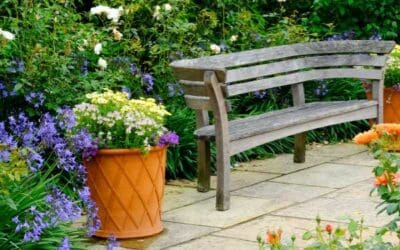Fall has arrived. This dip in the temperature is a reminder that those houseplants that have been basking in the summer heat and humidity outdoors will soon need to come back inside. A frosty night is not kind to plants that prefer warmer weather.
Middle Tennessee’s first-frost date — according to the National Weather Service, the date of the minimum temperature being 36 degrees F or below — is typically predicted around mid-October. But houseplants’ move from outdoors to in is a process, so it’s best to plan for the transition in advance.
Here are five important steps to follow when you bring houseplants indoors:
Watch the weather.
The best plan is to bring plants inside before nighttime temperatures consistently drop to 55 degrees F or below. In any case, don’t wait until the night before the first frost is predicted. Begin to move plants into shadier areas outdoors to allow them to become accustomed to lower light conditions.
Consider whether the plant needs repotting.
Some plants will have produced abundant new growth and may have outgrown their current container. Re-pot as needed.

Clean out any leaves
or other debris that may have accumulated in the pots during the summer. Examine the plant’s soil and, if possible, the roots, looking for earthworms, ants, pillbugs, snails and other creatures you probably don’t want to bring indoors.

Wipe down
or scrub the outsides of the pots to remove dirt, and wash drainage trays.
Inspect the stems and leaves
looking for any of those insects that can damage the leaves and spread to other plants – aphids, mealybugs, mites are among the most common culprits.

Don’t bring insects indoors

If you do find insects ready to hitch a ride inside, say goodbye to them before you make the move. Here are common houseplant pests, and how to control them:
Aphids: These are tiny, sometimes wingless insects typically found on the undersides of leaves, stems or flower buds. They survive (and cause damage) by sucking the plant’s juices. They can often be washed away with a spray of water. Insecticidal soap or horticultural oil will take care of heavy infestations.
Scale insects: These look like flattened discs or bumps stuck to the stems or on the undersides of the leaves. They, too, use their mouthparts to pierce the plant and feed on plant juices. Leaves and stems playing host to scale insects may turn yellow. Washing the plant with soapy water should eliminate the problem.
Mealybugs: White or light, cottony spots are a sign of plant-juice-feeding mealybugs. They may congregate at leaf joints or stem nodes, or some may feed on plant roots. Mealybugs have a coating that protects them from sprays, so removing them manually may be the best option. Use a cotton swab dipped in rubbing alcohol to wipe them away, or tweezers to pluck them from leaves and stems.
Fungus gnats: Adult gnats are tiny, dark-colored insects that fly around the plant. The adult insects are mostly a nuisance, but the larvae feed on the crown and roots of plants. Fungus gnats need constant moisture, so the best control is to avoid overwatering indoor plants. Some houseplant experts recommend capturing adult gnats by using small sticky traps; a piece of yellow cardboard coated with petroleum jelly may be an effective trap. Insecticide sprays also work.
Making the transition

Plants may show signs of stress as they adjust to lower light conditions – leaf drop is a common indicator. When you first bring houseplants indoors, place the plants where they receive the most sunlight indoors – south-facing windows are ideal — and gradually move them away from that stronger light. Remember, though, that plants need light to flourish, even in winter, so you may need to provide the necessary level with supplemental lighting.
The lower humidity inside a home is also a stressor. If you notice leaves drooping or drying, try to raise the humidity level by misting plants regularly to add moisture, or placing them in rooms with higher humidity, such as the kitchen or bathroom.
Feel free to reach out to our team with questions or concerns with your houseplants. And if you need our Botanical Design team to assist with your Plantscaping, we are here for you!





